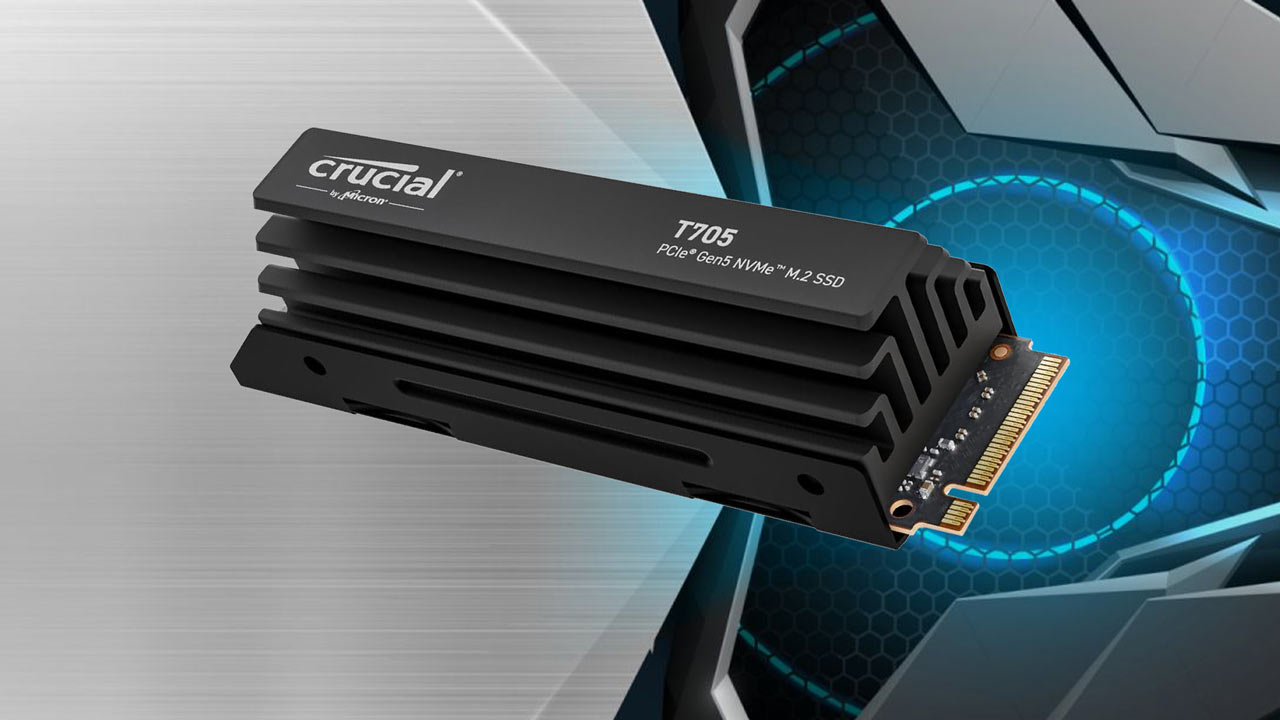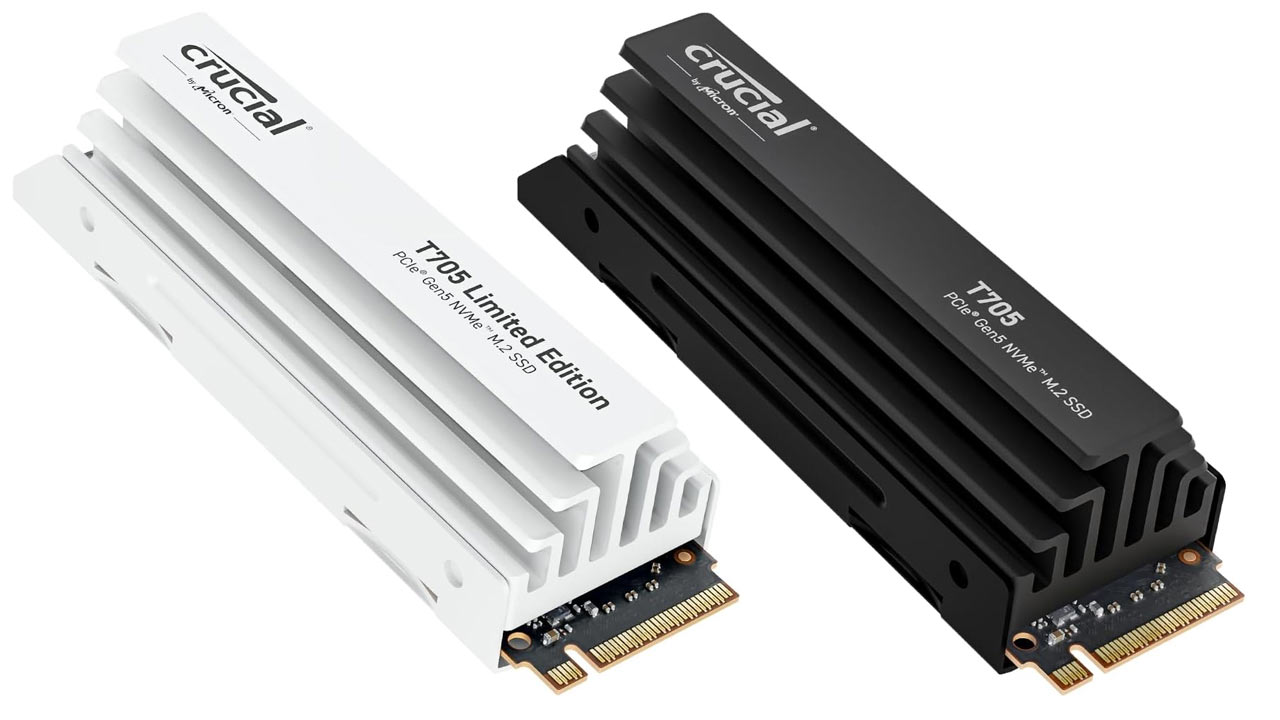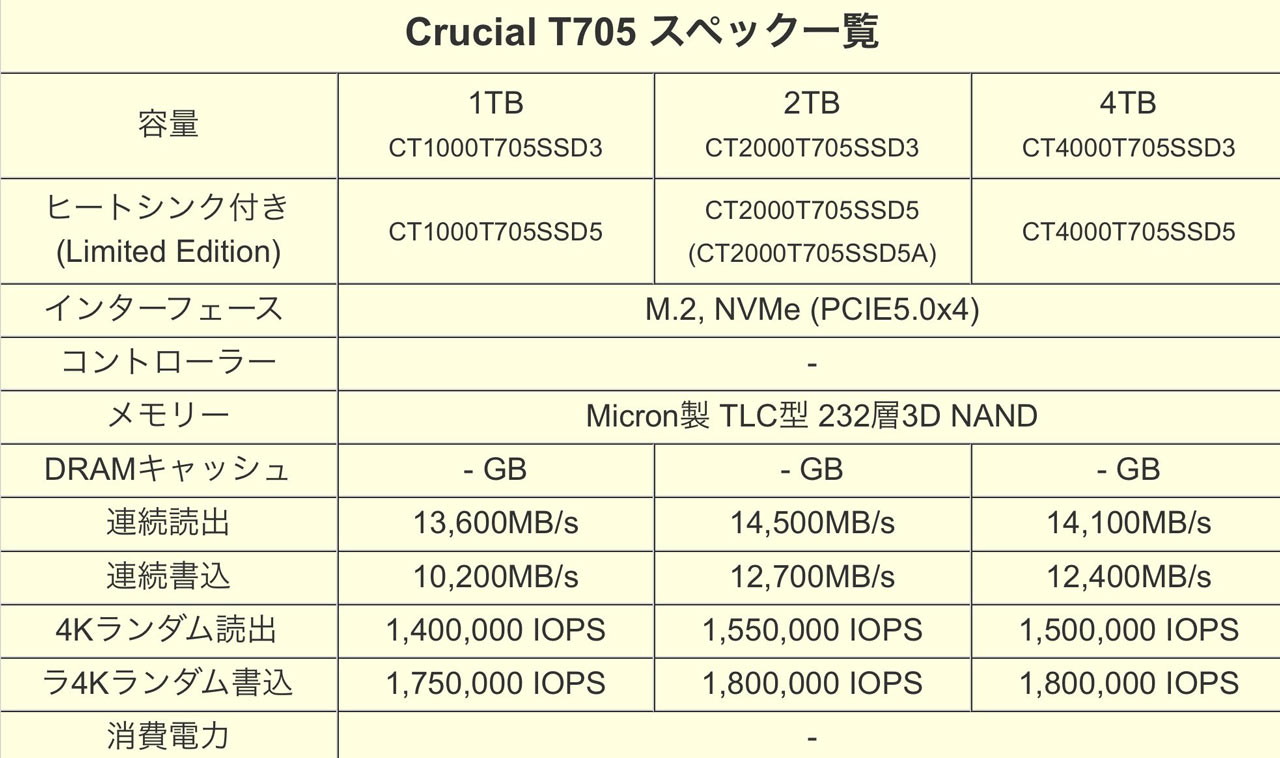Crucial T705 could deliver a blistering 14,500 MB/s of bandwidth — new PCIe 5.0 SSD pictures and specs leak
Might be a worthy update to our Editor's Choice PCIe 5.0 SSD.

A speedy new Crucial branded PCIe 5.0 SSD has leaked online. The new Crucial T705 and T705 Limited Edition have been pictured by well-known leakster momomo_us. Making the leak much more interesting, Deepblue replied with what looks like a Japanese data sheet for the Crucial T705 family. If the information is genuine, the new Crucial T705 PCIe 5.0 SSD will be capable of data transfers as fast as 14,500 MB/s.


The Crucial T700 launched last year and was Christened The Temporary King by our expert reviewer on its first full appearance in the labs, and gained the accolade of the Editor’s Choice for M.2 SSDs. In December, we followed up with a review of the 4TB version of the T700, and despite the arrival of plenty of PCIe 5.0 competitors in the interim, the product managed to hold onto its highly favored status at Tom’s Hardware. However, indications are that the new Crucial T705 and T705 Limited Edition are going to bring consumer storage performance to a new level.
Before we dive into a specs comparison, digging through the leaks indicates that the Crucial T705 will be sold with (SSD5 suffix) and without (SSD3 suffix) the corrugated passive heatsink design you see in the leaked product images. If you are drawn to the Limited Edition model in its splendid white livery (SSD5A suffix), you will have to buy the 2TB model.

|
Crucial T705 |
Crucial T700 | |
|---|---|---|
|
Interface |
PCIe 5.0 x4 |
PCIe 5.0 x4 |
|
Controller |
unknown |
Phison E26 |
|
Capacities |
1, 2, 4TB |
1, 2, 4TB |
|
NAND spec |
Micron TLC 232 layer 3D NAND |
Micron TLC 232 layer 3D NAND |
|
DRAM cache |
unknown |
Yes, LPDDR4 |
|
Fastest reads |
14,500 MB/s |
12,400 MB/s |
|
Fastest writes |
12,700 MB/s |
11,800 MB/s |
|
Fastest IOPS |
1,800K |
1,500K |
|
Endurance |
unknown |
Up to 2,400TBW |
Conspicuous by their absence from the new data sheet are the details and specifications regarding the Crucial T705’s controller, DRAM cache, and endurance.
The biggest change in the T705 spec sheet is the performance, with data read speeds moving up from a super-fast 12,400 MB/s to an incredible 14,500 MB/s, accompanied by a decent boost in IOPS figures. Driving the improved performance is surely a new controller, purposely absent from the leaked datasheet at this time. Micron / Crucial might well be using the new E26 Max14um controller for the T705. Other than that, the unknown cache specifications could be a contributory factor behind the improved performance, as other major components, like the NAND chips, seem to be unchanged. Remember, though, these are leaked details, so they must be taken with a pinch of salt.
Hopefully, Crucial will officially launch the new T705 and T705 Limited Edition soon, so we can see some answers to the questions this leak has inspired. Moreover, it will be interesting to see pricing at a time when it is widely predicted that consumers will face higher flash storage component costs.
Stay On the Cutting Edge: Get the Tom's Hardware Newsletter
Get Tom's Hardware's best news and in-depth reviews, straight to your inbox.

Mark Tyson is a news editor at Tom's Hardware. He enjoys covering the full breadth of PC tech; from business and semiconductor design to products approaching the edge of reason.
-
usertests ReplyWith TLC flash architectures beginning to reach their limits in terms of raw storage capacity (just like SLC and MLC before it), QLC represents the future for SSD manufacturers that want to keep pushing the capacity envelop of mainstream-consumer SSDs.
Micron TLC 232 layer 3D NAND
Looks like TLC isn't dead after all.
Only certain parts of the SSD might need that much cooling. We've already seen one fan designs, as well as AirJet on SSDs.dmoros78v said:LOL, how long before SSDs start resembling GPUs? triple axial fans anyone?
With PCIe 5.0 basically maxed out, the manufacturers can start to optimize controllers and NAND for lower power consumption. PCIe 6.0 may not be coming to consumer platforms anytime soon.